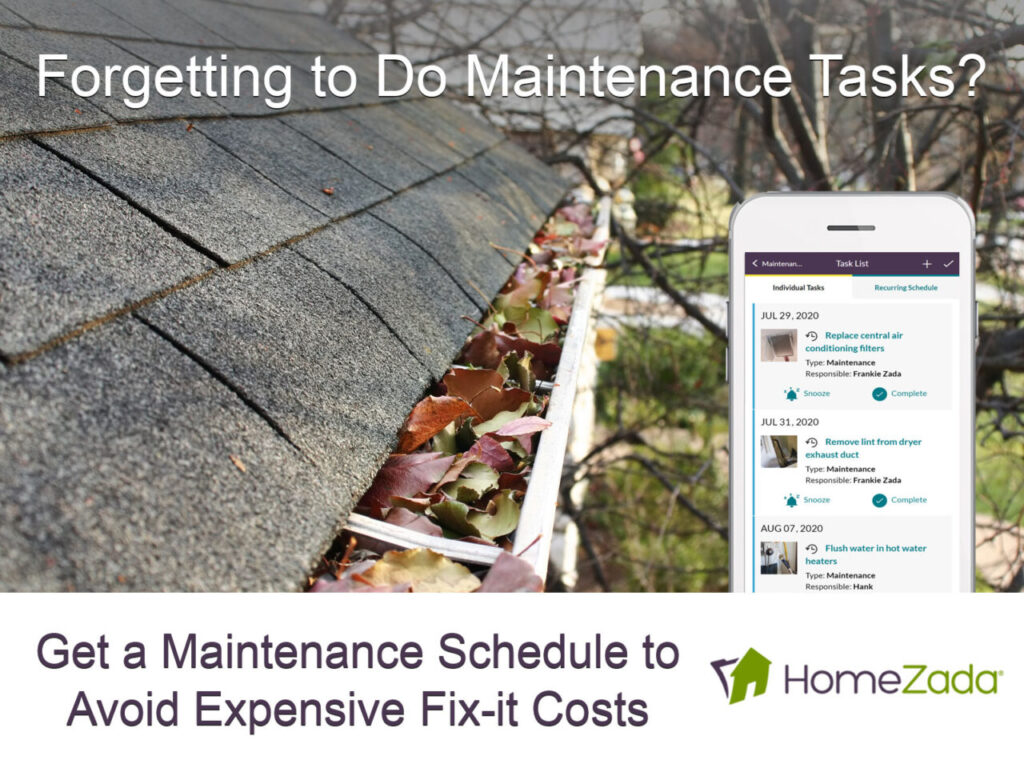You probably already have a list of home maintenance chores, such as changing the furnace filter seasonally, turning off the water before winter, cleaning the gutters, etc.
Although this is a good beginning, there are some tasks that homeowners frequently overlook or are unaware of.
Here are a few crucial home maintenance tasks that may not be on your to-do list but that, if neglected, could cost you a fortune or, worse still, cause you a great deal of stress.
1. The Forgotten Workhorse…Your Sump Pump
Your sump pump is easy to overlook, but it’s important to keep it functioning well. Otherwise, you may find yourself like the homeowner who came back from a weekend trip to find his basement floor completely soaked.
When he turned off the power, he noticed the sump pump wasn’t working. After giving it a closer look, he concluded that the cable that was tied to the float must have become tangled somehow.
After untangling the cable, the next 15+ hours were spent repositioning fans, using the wet/dry vac, and removing the saturated carpet. All of this could have been prevented by a routine sump pump inspection.
To make sure everything is working properly, test your pump at least a few times a year by adding water to the basin.
2. Clean window weep holes
Many sliding windows and vinyl replacement windows include weep holes at the external bottom of the frame.
Insects and other debris can clog up these holes, preventing the rainfall from draining properly, potentially leading to water spilling into your house.
To check if your weep system is working properly, pour a glass of water into the track, or shower the outside of the window with a garden hose.
If you don’t see a steady stream of water exiting, blow out the debris with compressed air (or use a piece of wire), then check to be sure that water can easily drain.
The little flapper that is meant to stop the driving wind can be opened and changed with the help of a putty knife.
3. Clean your refrigerator’s coils
Check the condenser coils of your refrigerator. These can be found on the back or the bottom of the appliance.
Coils can be clogged by dust, pet hair, and cobwebs, making it impossible for them to adequately release heat. As a result, your compressor operates longer than it should and consumes more energy, shortening the lifespan of your refrigerator.
To clean the coils, use a vacuum and a coil-cleaning brush. A coil-cleaning brush can be bent to fit in tight spots, helping to reach every nook and cranny.
4. Maintain Window Wells
You might not even consider cleaning out a window well if you’ve never had an issue with a clogged one before.
When leaves, twigs, and other debris collect in the wells, it can act as a lining, preventing water from draining. Then, water can accumulate, putting pressure on the glass of the windows until the pressure builds and the glass windows break.
Consequently, your basement can overflow with water, destroying everything in its path. If you haven’t already, purchase a window well cover to prevent this happening to your windows.
5. Remove water heater sediment
Over time, the bottom of a water tank will collect sediment. This causes hot spots on gas-powered heaters, which can damage the tank and cause it to fail early.
It is possible for sediment buildup to stop the lower heating element of an electric water heater from working. Therefore, draining a water heater periodically will reduce energy consumption and extend its life. Experts recommend draining water heaters at least once a year.
6. Lubricate your garage door springs
Lubricate the overhead torsion springs on your garage door. These springs are located above the roller tracks. All springs eventually fail, either due to rust and/or metal fatigue, so it’s possible to extend their life by lubricating them at least once a year.
Note that spraying can be messy, so it’s a good idea to cover the wall behind the spring with some cardboard as protection. Garage door lubricant is available at home centers. Lubricate the track, hinges, and rollers while you’re at it.
7. Check for mouse nests
Mice like to spend the winter in tight spaces like lawn tractor crevices, window A/C units, and engine compartments. Look inside a vehicle or piece of equipment that has been sitting inactive for some time to check for mouse nests before starting it up.
Launching your boat only to discover that some hairy stowaways have eaten through half of the wiring is the very last thing you want to happen. Mice nests can surround and jam carburetors in addition to heating up electronics.
8. Maintain Dryer Vents
Finally, maintain your dryer vent. A clogged dryer vent will make your dryer less effective, and it can also lead to a house fire!
Centrally situated dryers in homes are particularly prone to clogging because of the longer ductwork. Numerous things, such as an abundance of lint, vermin that are nesting, and jammed exhaust hood flappers, can result in duct backups. Stronger odors and longer drying periods are two signs that your vent is blocked.
To clean the vent, you will need to remove it from the dryer’s back. Use a wet/dry vacuum to remove debris from the ducts, or use a cleaning kit that includes a brush on a long, flexible rod that connects to a power drill to ream them out.
The kits can be found at home improvement stores. If your ducts need to be replaced, opt for smooth metal ducts instead of flexible ducts with their rough corrugated surfaces, because they’re easier to clean and will stay cleaner longer. Plastic ducting should never be used because it poses a fire risk.
How to Prepare For Natural Disaster Season Where You Live


